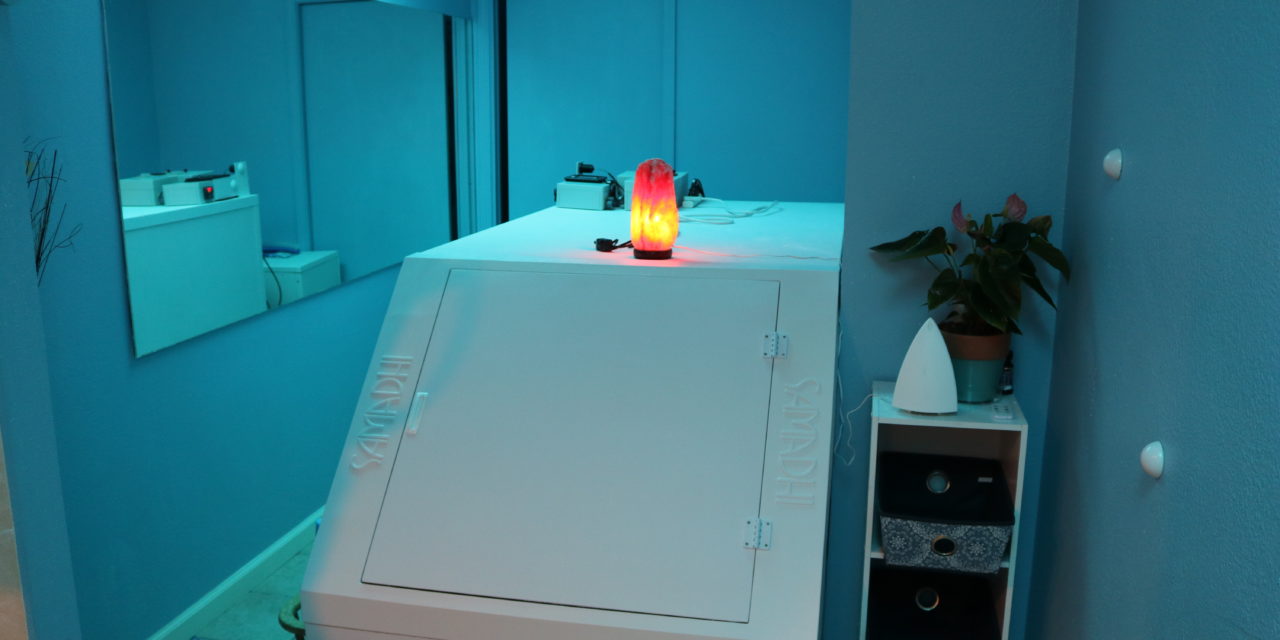BY CHRIS TAKAHASHI | STAFF WRITER
To the uninitiated, the idea of entering a sensory deprivation float tank for therapeutic benefits may sound like medical quackery, especially if you write off the experience as merely floating in heavily salt-fortified water.
I had my initial reservations about the idea, too, but my giddy excitement at experiencing a new and unique sensation ultimately prevailed after I was invited to “float” at the Hawai‘i Health Hub by owner Lily Causin.
The Samadhi-manufactured float tanks at Hawai‘i Health Hub are approximately 9 feet long and 4 feet wide, virtually soundproof, and absent of light. Instead of being a human-sized chamber for teleportation purposes (they have that persona about them), the float tanks are filled with about 10 inches of water and nearly 1,000 pounds of epsom salt. The heavy concentration of salt, which alone has a therapeutic and detoxifying effect, means that absolutely no effort is required to free float in a zero-gravity medium.
I partook in a 75-minute float and the experience was a dreamy and meditative affair. After a pre-float shower, I put on wax earplugs and slipped into the float tank chamber. Closing the door behind me, I made my way over to hit the button on the side of the chamber that illuminated a faint light, the only “sight” sensation to finding my float position. When I finally did settle on my back to float, the incredible buoyancy of the water was immediate and surreal. I gave out a light chuckle as a I settled into a more comfortable position with my arms resting by my side.
Causin had given me pre-float instructions and pointed out the petroleum jelly to lather on skin abrasions since the high concentration of salt in the water can really sting exposed skin. A couple days prior my leg had made contact with the coral reef while surfing, and my reef cut soon fell victim to the salt water burn. I stubbornly thought that I could outlast this burn and adjust. After about 10 minutes it became apparent that this strategy was much too hard-headed. I stepped out of the chamber and humbly put on the petroleum jelly.
Entering the chamber again, my reef cut had ceased to sting and I experimented with different positions for my arms. The most comfortable position was to have them at my side, a few inches away from my body. Once I settled into an effortless floating position I was whisked away into a dreamy state.
Part of the sensory deprivation experience lies in the fact that the water is heated up to your natural body temperature. Coupled with complete darkness, elimination of sound, and the zero-gravity effect of floating, you feel essentially no external stimuli from the environment. In our maddening modern world of constant distractions, I couldn’t help but think that this was one of the most surreal experiences of my life. Once you go completely still you literally feel as if you are a cloud drifting in the sky. Only the slight murmur of your heartbeat and breathing guide the way.
Many of the biggest proponents of sensory deprivation float tanks cite that the experience is practically a fast-track to a meditative state for your brain. If done properly, floating can help you find a state of zen in which your brain begins to produce theta waves. As Causin explained after my float, “everything starts with the mind,” and the float tank is a portal for self-discovery, stress relief, and more.
For me, my thoughts at the initial onset of the float were quite trivial. What should I do with my afternoon? What do I want for lunch? I wonder if time will pass fast or slow inside this chamber?
After some time spent in the float chamber, my thoughts seemed to float away. Which, at least in my perspective, was a beautiful thing. Thoughts can hijack our emotions, mood, behavior, etc. Our thoughts can get us in trouble if run amok.
Being in a sensory deprivation float tank leaves you alone with your thoughts, which may be a terrifying proposition to some, but I discovered that this floating, sense-deprived medium was especially conducive for letting go of unwanted thoughts. When I did emerge to the “outside” world after my float, I felt as if my mind had been reset by an inner calmness. The return to “normal” stimulation (lights, noise, movement) took a few minutes to absorb.
That inner calmness can even help one channel desirable thoughts in a positive fashion. Apparently NBA star Stephen Curry floats periodically to help him focus his mind for enhanced athletic performance on the basketball court. Professionals with high-stress occupations find the sensory deprivation experience of floating to be the perfect post-work therapy, and there are doctors that routinely visit the float tanks at Hawai‘i Health Hub after their shifts.
Located on Ward Avenue in the Kakaʻako neighborhood, Hawai‘i Health Hub features a complete arsenal of what one may deem “natural medicine” therapies in addition to float tanks. Cryotherapy, massages, and acupuncture are also offered. Causin is a trained acupuncturist herself, having completed the acupuncture program at KCC. To read more about the science behind float tanks and to schedule an appointment (individual sessions are priced at $70; multi-float packages at a discount rate are also available), check out Hawai‘i Health Hub online at www.hawaiihealthhub.com or by calling direct at (808) 675-8399.







Trackbacks/Pingbacks